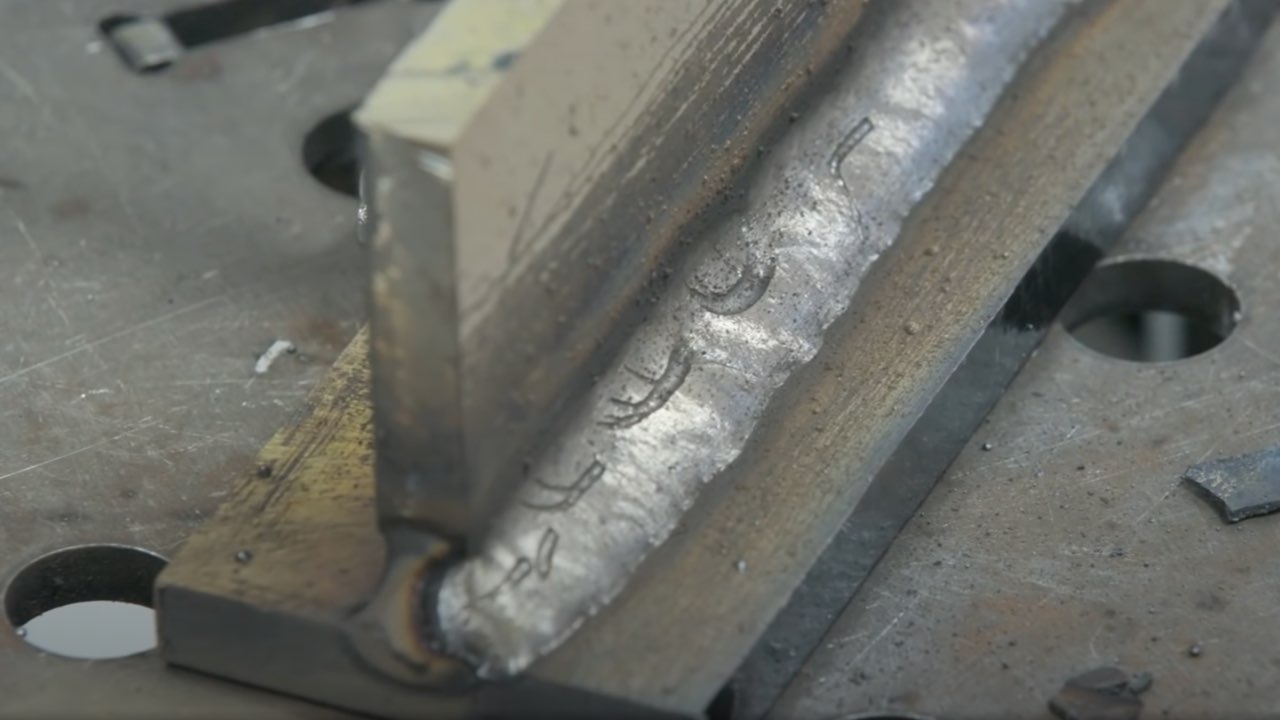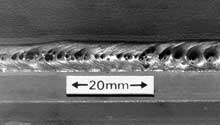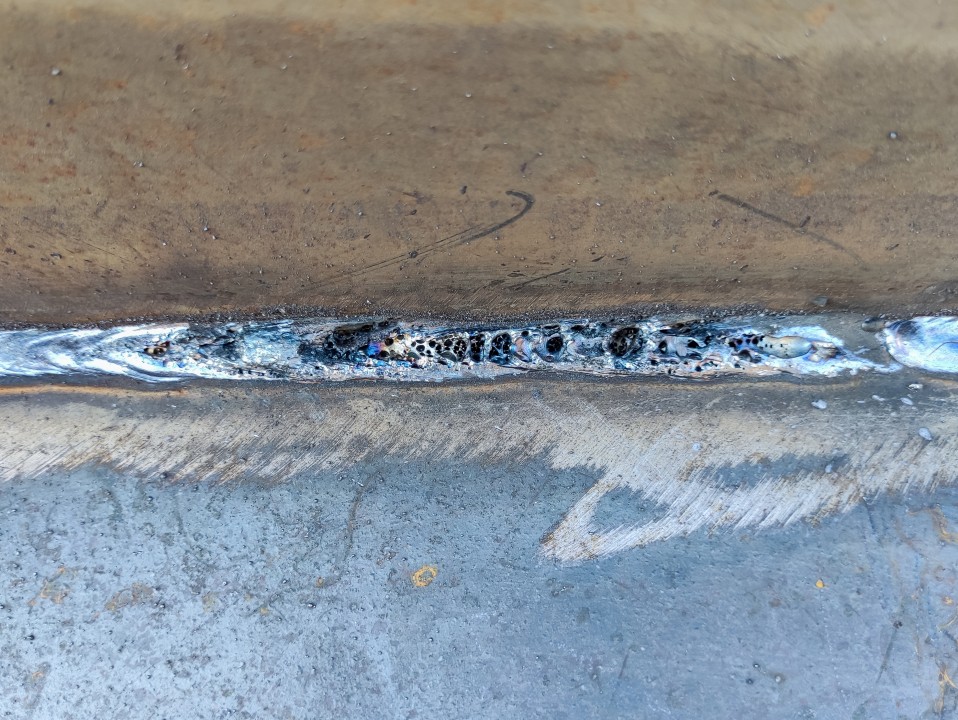Deciphering the Mystery of Porosity in Welding: Tips for Lessening Issues and Optimizing Quality
In the elaborate globe of welding, porosity remains a relentless challenge that can substantially impact the top quality and integrity of welded joints. Recognizing the elements that add to porosity development is crucial in the search of remarkable welds. By deciphering the enigma of porosity and implementing reliable strategies for issue minimization, welders can elevate the criteria of their work to accomplish superior high quality results. As we dive right into the midsts of porosity in welding, revealing the secrets to its prevention and control will certainly be paramount for specialists seeking to master the art of top quality weldments.
Understanding Porosity in Welding
Porosity in welding, an usual concern encountered by welders, refers to the visibility of gas pockets or spaces in the welded material, which can endanger the integrity and quality of the weld. These gas pockets are typically caught throughout the welding process because of numerous factors such as improper securing gas, infected base products, or inaccurate welding parameters. The development of porosity can compromise the weld, making it at risk to cracking and corrosion, eventually leading to architectural failings.
By identifying the value of preserving correct gas securing, making sure the sanitation of base products, and enhancing welding setups, welders can dramatically decrease the probability of porosity development. Generally, an extensive understanding of porosity in welding is vital for welders to generate top notch and durable welds.

Common Root Causes Of Porosity
When evaluating welding processes for prospective top quality problems, comprehending the typical causes of porosity is important for preserving weld honesty and protecting against structural failures. Porosity, identified by the visibility of cavities or gaps in the weld metal, can dramatically compromise the mechanical residential or commercial properties of a bonded joint. One common reason for porosity is improper protecting gas insurance coverage. Insufficient protecting gas flow rates or improper gas mixes can cause atmospheric contamination, causing porosity formation.
In addition, welding at improper parameters, such as exceedingly high travel speeds or currents, can produce too much disturbance in the weld swimming pool, capturing gases and creating porosity. By attending to these common reasons via correct gas protecting, material prep work, and adherence to optimal welding parameters, welders can reduce porosity and boost the top quality of their welds.
Techniques for Porosity Prevention
Applying effective safety nets is essential in minimizing the occurrence of porosity in welding processes. One strategy for porosity prevention is guaranteeing proper cleaning of the base metal prior to welding. Contaminants such as Continue oil, oil, corrosion, and paint can result in porosity, so thorough cleaning using appropriate solvents or mechanical methods is crucial.

Using high-grade filler materials and protecting gases that are ideal for the base metal and welding procedure can significantly minimize the risk of porosity. Furthermore, keeping appropriate welding specifications, such as voltage, current, take a trip speed, and gas flow price, is vital for porosity avoidance.
Moreover, employing proper welding methods, such as preserving a constant travel rate, electrode angle, and arc length, can help avoid porosity (What is Porosity). Adequate training of welders to guarantee they comply with ideal techniques and quality assurance go to the website treatments is also essential in reducing porosity flaws in welding

Finest Practices for High Quality Welds
One key technique is maintaining appropriate cleanliness in the welding location. Extensively cleansing the workpiece and bordering area prior to welding can help reduce these concerns.
Another ideal practice is to meticulously select the suitable welding parameters for the specific products being joined. This includes establishing the proper voltage, present, travel speed, and securing gas circulation price. Correct specification option makes sure ideal weld infiltration, blend, and total high quality. Making use of premium welding consumables, such as electrodes and filler steels, can considerably affect the last weld high quality. Purchasing costs consumables can lead to stronger, more resilient welds with less issues. By adhering to these best techniques, welders can continually generate top quality welds that meet industry standards and go beyond client expectations.
Relevance of Porosity Control
Porosity control plays a critical function in ensuring the stability and quality of welding joints. Porosity, characterized by the visibility of dental caries or spaces within the weld metal, can significantly compromise the mechanical residential properties and structural integrity of the weld. Too much porosity deteriorates the weld, making it much more prone to cracking, deterioration, and total failure under operational loads.
Effective porosity control is important for maintaining the desired mechanical residential properties, such as strength, ductility, and toughness, of the bonded joint. What is Porosity. By lessening porosity, welders can boost the general high quality and dependability of the weld, ensuring that it fulfills the performance requirements of the desired application
In addition, porosity control is crucial for accomplishing the preferred aesthetic appearance of the weld. Extreme porosity not only damages the weld yet also interferes with its aesthetic charm, which can be important in markets where visual appeals are essential. Appropriate porosity control strategies, such as utilizing the appropriate protecting gas, controlling the welding criteria, and making sure appropriate cleanliness of the base materials, are essential for creating high-grade welds with minimal flaws.

Conclusion
In conclusion, porosity in welding is a common defect that can endanger the high quality of the weld. By recognizing the sources of porosity and carrying out proper avoidance methods, welders can reduce flaws and accomplish greater quality welds. It is vital to regulate porosity in welding to make certain the integrity and toughness of the end product. Implementing finest methods for porosity control is critical find more info for accomplishing ideal welding results.